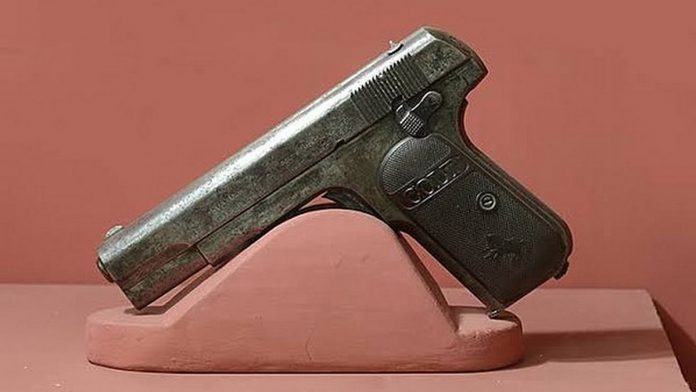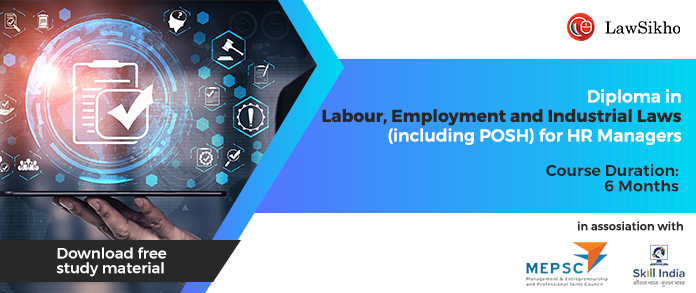This article is written by Nikara Liesha Fernandez and Pragya Agrahari. Through this article, the author carries out an in-depth analysis of the development of the Arms Act, 1959 as well as the provisions of the same and the amendments made to it by the Arms (Amendment) Bill, 2019. It also provides a detailed analysis of the Arms Act, 1959, consisting of its objectives, important definitions, provisions for licensing of weapons, appeals, and offences under the Act.
This article has been published by Sneha Mahawar.
Table of Contents
Introduction
The Arms Act, 1959 was enacted by the Indian Parliament with the sole purpose of consolidating and amending the laws relating to arms and ammunition. This was the need of the hour in order to curb the menace caused by individuals holding illegal weapons which could be potentially used to perpetrate violence in society through criminal activities. The Act aims to be as extensive as possible to cover all aspects relating to the acquisition, possession, manufacture, sale, import, export and transport of arms and ammunition as stated explicitly in Chapter II of the same. Further, Chapter IV of the Act elaborates upon the powers and procedures exercisable by the government and other officials in regulating the use and possession of arms and ammunition in India including provisions for arrest, search, seizure and detention orders.
History of the Arms Act
The very first instance involving the use of guns by the Indian people which caused alarm among the then individuals in power- the British, was the sepoy mutiny of 1857. This unsettling event during colonial times involved the introduction of the infamous Enfield rifle by the British for use by the Indian sepoys. In order to use the rifle, however, the sepoys had to bite off the lubricated cartridges which were greased with a mixture of pig and cow lard. This was a tactic to insult the religious sentiments of the Muslims and Hindus respectively and caused mass violence and discontent among the Indian sepoys. This gave momentum to the sepoys to unite and cause a violent uprising against the British officials.
The British, on realizing the rapidity with which the Indians were able to put their differences aside and join hands to fight against their oppression decided that the only way to prevent any future mass uprisings against them was to establish an Act that restricted the Indians from possessing any arms. This gave rise to the Indian Arms Act, 1878. According to this Act, only those Indians who had prior permission or a proper license were allowed to possess arms. This Act further regulated the manufacture, sale, possession and carrying of firearms and was implemented during the tenure of the then Viceroy of India, Lord Lytton.
The hypocrisy of this Act was evident as Europeans were conveniently exempted from the provisions of the same while strict penalties and punishments were put forward for Indians if they were found owning any type of weapon.
After independence, the Government of India passed the Indian Arms Act, 1959 which recognised the necessity for certain law-abiding citizens to possess and use firearms for the purposes of sports, crop protection and self-defence. This Act was followed by the Arms Rules of 1962.
Objectives and scope of the Arms Act, 1959
As per the preamble, this Act aims ‘to consolidate and amend the law relating to arms and ammunitions.’ The main objective of this Act is to regulate and restrict the circulation of arms and ammunition, which were illegal. It provides the procedure for obtaining licences for some categories of arms or ammunition and restricts dangerous weapons so that they will not be available to civilians. This Act applies to the whole of India.
Moreover, through this Act, the people’s right to keep and bear arms has been recognised as a legal right. It was realised that in some situations, like self-defence, or in circumstances where there is a serious threat to life and property, it is necessary to allow them to possess and use certain arms and ammunition.
Important definitions under Arms Act, 1959
Ammunition
“Ammunition” means objects used to shoot firearms. As per the definition provided under Section 2(b) of this Act, “ammunition” includes:
- rockets, bombs, grenades, shells or missiles,
- articles used in torpedo service and submarine mining,
- articles used to contain any explosives, fulminating or fissionable material or any noxious liquid or gas or any other things which can or cannot be used with firearms,
- charges for firearms and their accessories,
- fuses or friction tubes,
- manufacturing machinery or parts of ammunition,
- any other ingredients specified by the Central government.
Arms
As per the definition of “arms” provided in Section 2(c), arms means articles that are designed as weapons for offence or defence. It includes firearms, any other sharpened or deadly weapons, and manufacturing machinery and parts of arms. But it does not include the following:
- Articles designed solely for domestic or agricultural purposes, like lathi or walking stick, or
- Weapons that can only be used as toys or are incapable of being converted into serviceable weapons.
Firearms
According to the definition of “firearms” provided under Section 2(e), it means arms that are designed to discharge a projectile(s) through an explosion or any other form of energy. It includes:
- Artillery, hand grenades, riot pistols or weapons designed to discharge noxious liquid or gas,
- Accessories for firearms used to diminish the noise or flash caused by such firearms,
- Manufacturing machinery or parts of firearms,
- Carriages, platforms and appliances for transporting firearms.
Provision for licenses
The process of obtaining an arms license is no easy task. Unlike the United States of America, where the right to bear arms is constitutionally recognized, the Indian firearm laws are one of the strictest in the world. Obtaining a license to possess a firearm can take a minimum of one whole year due to the number of procedures that one has to undergo in order to satisfy the authorities that he/she is eligible to possess a firearm.
Section 3 of the Act states that only those individuals who possess a valid license issued in accordance with the provisions of the Act are entitled to possess any firearm or ammunition. The 1959 act permits individuals to possess a maximum of three firearms. The excess, if any, is to be deposited at the nearest police station within 90 days of the commencement of the Act.
Applications for the grant of an arms license are required to be made to the appropriate licensing authority in the proper form with the required documents and fees. The minimum age that an individual needs to be in order to be eligible to possess a firearm is 21 years. In the case of a ‘junior target shooter’, however, an individual of 16 years of age is allowed to possess a firearm.
An individual’s application for a license must be accompanied by documents such as identity proof, address proof, proof of age and education, four passport size photographs, income tax returns for the last three years and a character certificate as well as physical and mental health certificates.
For a self-defence license, it is mandatory that the individual proves that he/she faces an impending threat to life. This can, however, includes the threat of wild animals.
Following the application, the police carries out a background check of the individual, spanning a time period of two months which consists of an interview period of the individual’s family and neighbours in order to assess his/her nature- whether he/she is aggressive or suppressive, has any criminal history of domestic violence or aggression, etc.
The reports made by the police are stored with the Police Criminal Branch of the National Crime Record Bureau and finally, the licensing authorities interview the applicant and decide whether they want to grant or reject the application for the license.
If the license is granted, the applicant is mandatorily made to participate in an ‘arms handling’ course to ensure he/she handles the firearm in a safe and responsible manner. Arms licenses are valid for a period of three years.
The Central Government has the final say on the confiscation of licenses and weapons of individuals at any point in time. They also hold a monopoly over the manufacture, import, export and sale of such arms and ammunition.
The licensing authority has the power to deny an individual the license to possess arms under the following conditions (Section 14 of the Act) –
- If the individual is already prohibited under the provisions of this Act or under any other law currently in force from possessing any arms and ammunition, or
- If the individual is found to be of unsound mind or age of minority.
Licence for manufacture and sale of arms
Section 5 of the Act clearly prohibits any person from using, manufacturing, selling, transferring, converting, repairing, or testing any arms or ammunition without having been issued a licence. But a person is allowed to sell or transfer arms and ammunition that he legally possesses for his own private use to another person who is not prohibited by this Act from possessing such arms or ammunition. In the case of firearms for which a licence is required, the person selling or transferring such firearms should inform the district magistrate having jurisdiction or the officer of the nearest police station about:
- The sale or transfer of such firearms, and
- Name and address of the person to whom he intends to transfer or sell.
It should be noted that the person who is selling or transferring such firearms should sell or transfer them within 45 days of providing such information.
Licence for import/export of arms
Section 10 of the Act clearly states that unless a person is holding a licence, they are not allowed to take any arms or ammunition out of India, either by land, air, or water. But there are some exceptions to this rule:
- A person who is entitled by this Act or any other Act, or a person who is not prohibited under this Act, can take such arms or ammunitions in reasonable quantities, out of India, without any licence and such arms or ammunitions should be for his own private use.
- A person who is a bona fide tourist can bring into India arms or ammunition in reasonable quantities for the purposes of the sport only. Such a person should belong to the country as specified by the Central Government in the Official Gazette and is not prohibited by the laws of that country to possess any arms or ammunition.
Moreover, the Commissioner of Customs, empowered by the Central Government, has extensive powers to detain arms or ammunition until he gets an order from the Central Government.
Duration of licence
Section 15 of the Act specifies that the duration of the licence is for a period of 3 years from the date on which it was granted. However, it can be granted for a shorter period if the person desires so or if the licensing authority considers so, due to any reasons which need to be recorded. Every licence is renewable in the same way as it was granted under Sections 13 and 14, unless the licensing authority decides otherwise for reasons that are to be recorded.
Suspension of licence
Section 17(3) of the Act provides for the suspension or revocation of the licence under the following circumstances:
- If the licensing authority is satisfied that the person is prohibited under this Act or any other Act to acquire or possess arms or ammunition, or if the person is of unsound mind, or if the person is unfit due to any reasons for grant of licence under this Act,
- If it licensing authority deems it necessary for public safety to revoke the licence,
- If the licence was obtained on the basis of wrong information or by suppressing material information,
- If any conditions for the grant of the licence were not fulfilled,
- If the licence holder fails to comply with the notice under Section 17(1) of the Act,
- If the licence-holder applies for such revocation.
The licensing authority should provide the licence holder with a brief written statement consisting of the reasons for such a revocation.
Types of arms
The Act categorises under Section 2, the firearms which an individual can possess into two main categories:
- Prohibited Bores (PB), which can be used only by the Army, Central Paramilitary forces or the State police.
- Non- Prohibited Bores (NPB), which can be used by all individuals who hold a valid arms license.
The primary basis of the distinction between the two is on the measurements of the bore, which is the thickness or diameter of the bullet.
The 2008 Mumbai terror attacks saw a change in gun ownership norms. Prior to the attack, prohibited bore firearms were allowed to be used by both defence forces personnel and family heirlooms. Post the attacks, however, only those individuals who face ‘serious and imminent threat’ to their own person or family members as a result of being residents of terrorist-prone areas, or are potential targets of terrorists as a result of the nature of the jobs, are allowed to possess PB firearms. The PB licenses can only be granted by the Central Government.
Prohibitions
Section 2(1)(h) of the Act contains a list of ‘prohibited ammunition’ which includes any ammunition containing any noxious liquid, gas or any other such thing and includes rockets, bombs, grenades, shells, missiles and articles designed for torpedo service and submarine mining.
Further, the prohibited arms enumerated in Section 2(1)(i) of the act include adapted firearms that provide a continuous discharge of missiles on applying pressure to the trigger or until the magazine containing the missiles is empty as well as any weapons designed to discharge noxious liquids and gases. The list also includes artillery, anti-aircraft and anti-tank firearms.
Section 7 of the act prohibits the possession, acquisition, manufacture, or sale of the prohibited arms and ammunition as stated above. Section 9 of the act further prohibits the acquisition and possession, whether by sale or transfer of the firearms to young persons (those individuals who have not completed 21 years of age). Sections 24A and B of the act prohibit the possession of notified arms in disturbed areas and the carrying of notified arms in or through public places in disturbed areas respectively.
Deposition of unlawful arms
Section 21 of the Act states that an individual is required to deposit the arms in his/her possession without any delay to the appropriate officer of a police station, in the event of his/her license getting expired, revoked, or suspended such that further possession of the arms by the individual becomes unlawful.
Who can possess arms
Though the Act does not specifically provide who can possess certain arms and ammunition, Sections 9 and 14 consists of persons who are prohibited from acquiring or possessing such firearms. Section 9(a) states that persons who are not eligible to possess or acquire any firearms and ammunition who:
- Is below the age of 21 years, or
- Has been convicted and sentenced of any offence related to violence or moral turpitude, during a period of 5 years after the expiration of sentence, or
- Has been ordered by the court to execute a bond for keeping the peace or good behaviour under the Code of Criminal Procedure, 1973, during a period of that bond.
Section 14(b)(i) states that where a licensing authority has reason to believe that the person is
- Prohibited by any provisions under the Act or by any other law applicable at that time, for acquiring, possessing or carrying any arms or ammunition, or
- Of an unsound mind, or
- Due to any reason, is unfit for a licence under the Act.
Powers of the central government
The Central Government may, by notification in the Official Gazette, take the following actions:
- Prohibit the import or export of certain arms or ammunitions (Section 11),
- Restrict the transportation of arms or ammunition over India or in any part of it (Section 12),
- Suspend or revoke or direct the licensing authority to suspend or revoke anyone’s licence issued under this Act (Section 17(9)),
- Exempt or exclude any person or class of persons in relation to specified arms or ammunitions, from the operation of certain provisions or the entire provisions of this Act (Section 41),
- Direct a census of firearms in any area and empower any officer to conduct such census (Section 42),
- Delegate its powers or functions to any officer subordinate to the Central Government or State Government (Section 43),
- Make rules for carrying out any functions under this Act (Section 44).
Appeal and appellate authority
Any person who is aggrieved by the order of the licensing authority can appeal to the appellate authority against such order within a prescribed period as per the Indian Limitation Act, 1908. But if the order is made by the government or under the directions of the government, no appeal shall lie against such an order.
This appeal should be made through a petition in writing along with a brief statement of reasons for appealing against the order. It should also be accompanied by the prescribed fees. In disposing of such an appeal, the appellate authority should provide the appellant with a reasonable opportunity to be heard. The order against which the appeal was filed shall remain in force until and unless the appellate authority directs otherwise. The order of the appellate authority, whether to modify, confirm, or reverse the order, shall be final.
Penalties for offences (more content for existing heading)
| Section | Offence | Punishment |
| Section 25(1) | Manufacture, sale, etc of arms and ammunition without licence/ shortening of guns or conversion of imitation firearms into firearms/ import and export of arms after the prohibition of Government, etc. | Minimum imprisonment of 3 years which may extend to 7 years and fine. |
| Section 25(1A) | Acquiring or possessing prohibited arms or ammunition | Minimum imprisonment of 5 years which may extend to 10 years and fine. |
| Section 25(1AA) | Manufacturer, sale, transfer, etc/ keeping in possession for sale, transfer, etc any prohibited arms or ammunitions | Minimum imprisonment of 7 years which may extend to life imprisonment and fine. |
| Section 25(1AAA) | Possessing/ carrying notified arms or ammunitions in disturbed areas (Section 24A, 24B) | Minimum imprisonment of 3 years which may extend to 7 years and fine. |
| Section 25(1B) | Acquiring, possessing, carrying firearms or ammunition without a licence, Acquiring, possessing, or carrying firearms or ammunition without a licence in notified places, Selling, and transferring firearms with no identification marks- the name of the maker or manufacturer’s number, etc, Carrying or possessing arms or ammunitions by persons who are prohibited- A convicted person for an offence related to violence or moral turpitude and during the period of 5 years after the expiration of his sentence, orA person who has executed a bond for keeping good behaviour and during the period of his bond. Selling, transferring to, or converting, repairing, etc for prohibited persons or persons of unsound mind, Importing or exporting arms or ammunition, Transporting arms or ammunition despite of Government’s notification, Failing to deposit arms if it is exceeding the limit of three within 90 days or if it has been suspended, revoked or in any kind become unlawful, Failure to maintain records, false entry or obstructing inspection of records, etc by manufacturer or dealer in arms or ammunition. | Minimum imprisonment of 1 year which may extend to 3 years and a fine. |
| Section 25(IC) | Committing any offence punishable under this section in the disturbed area. | Minimum imprisonment of 3 years which may extend to 7 years and fine. |
| Section 25(2) | Acquiring, possessing, or carrying arms or ammunition by a person who has not completed the age of 21 years. | Imprisonment for a term that may extend to 1 year or a fine or both. |
| Section 25(3) | Selling or transferring arms or ammunition without informing the District Magistrate or officer of the nearest police station. | Imprisonment for a term that may extend to 6 months or a fine that may extend to 500 rupees or both. |
| Section 25(4) | Failing to deliver up a licence or failing to surrender a licence after suspension or revocation. | Imprisonment for a term that may extend to 6 months or a fine that may extend to 500 rupees or both. |
| Section 25(5) | Refusing to furnish name and address when required or giving a false name or address. | Imprisonment for a term which may extend to 6 months or fine which may extend to 500 rupees or both |
Non-application of the Arms Act, 1959 in certain cases
The provisions of this Act would not apply in certain cases, which are as follows:
- If such arms or ammunition is on board on sea-going vessel or aircraft and is a part of the ordinary armament or equipment of such vessel or aircraft,
- Acquisition, possession, manufacturer, repair, sale, transfer, import, export, transport, etc of arms or ammunition
- If it is done under the orders of the Central Government,
- If it is done by a public servant in the course of his duty,
- If it is done by
- a member of the National Cadet Corps under the National Cadet Corps Act, 1948,
- an officer or an enrolled person of the Territorial Army under the Territorial Army Act, 1948,
- a member of other forces under any Central Act or in accordance with a Central Government’s notification in the Official Gazette,
- Obsolete weapon of antiquarian value not capable of being used as a firearm without repair,
- Acquisition, possession, and carrying of minor parts of arms or ammunition not intended to be used with complementary parts.
Relevant case laws in the context of the Arms Act
Right to possess arms and ammunition as a fundamental right under Article 21
In the case of Ganesh Chandra Bhatt v. Distt Magistrate, Almora & Ors. (1993), the issue was whether the right to bear arms formed a part of the right to self-defence, which is a facet of the right to life and liberty under Article 21 of the Constitution. In this case, the Court observed the following:
- The right to bear arms did indeed fall within the ambit of Article 21, under the right to self-defence.
- If despite the applicant has followed the due procedure to obtain the license for a non-prohibited firearm, he/she still receives no communication from the authorities at the conclusion of three months, the license is deemed to have been granted by the government.
- The custom of worshipping firearms during the festivals of Dussehra and Diwali, which finds its roots in the Mahabharata is linked with the self-respect and dignity of a citizen which was essential for him/her to enjoy their right to life granted under Article 21.
This decision, however, was consequently overturned in the aftermath of the 1993 Bombay bomb blasts, as a result of which the constitutional protection granted to the right to bear arms was abolished and the right to bear arms has henceforth been governed solely according to the provisions of the Arms Act and is recognized as a legal right under the same.
‘Conscious possession’ as a core ingredient to establish guilt for an offence punishable under Section 25 of the Arms Act
In the case of Hari Kishan v. State (NCT Of Delhi) (2019), the issue was with regard to the interpretation of the word ‘possession’ under Section 25 of the Arms Act which dealt with the offences and penalties for individuals which resulted in imprisonment for a minimum period of three years, extendable to seven years with a fine.
The petitioner, in this case, was found to be in the alleged possession of a live cartridge in the side pocket of his bag which was detected by officials who were conducting the baggage check at the Saket metro station. The petitioner, as a result of this finding, was immediately charge-sheeted under Section 25 of the Arms Act.
The petitioner claimed that he was utterly shocked and surprised as he did not have any knowledge of the presence of the live cartridge in his bag’s side pocket and instead he was framed for the same. The petitioner had a clean record. It was also proven that there was no firearm or any weapon at all in his possession. Further, he had no knowledge of the presence of the live cartridge, or in other words, he was definitely not in conscious possession of the live cartridge.
He stated that Section 25 of the act covered conscious possession and that mere custody without the awareness of the nature of such possession could not constitute an offence under the Act. The petitioner further drew the Court’s notice to the fact that the provisions of the Act could not apply in the present case as according to Section 45 of the act itself, ‘the acquisition, possession or carrying by a person of minor parts of arms or ammunition which are not intended to be used along with complementary parts acquired or possessed by them of any other person’ does not fall under the commission of an offence.
The Court agreed with the petitioner’s arguments and in the fact that there was not a “whisper of averment in the First Information Report (FIR) as averred in the charge sheet that the petitioner was aware of being in alleged conscious and knowledgeable possession of the ammunition in question, the FIR against the petitioner as well as the proceedings emanating therefrom were quashed”.
The facts of the above case are similar to the case of Rachelle Joel Oseran v. The State of Maharashtra and Others (2018), which dealt with the issue of ‘conscious possession’ and the Court in this case as well held the same verdict as stated above.
The Arms (Amendment) Bill, 2019
The main feature of the Arms (Amendment) Bill, 2019 was the modification of the definition of ‘arms’ to include firearms, swords and anti-aircraft missiles. Despite the attempts made by the previous act to curb the nexus of illegal firearms and criminal activity, the use of illegal firearms in the commission of offences was still rife in society. Additionally, the validity period of the arms license was extended from three to five years and the number of arms permissible to be within an individual’s possession (provided he/she is carrying a valid license) was reduced from three to two. This included arms passed on by way of a family heirloom. Under the list of prohibitions, the obtaining or procuring of unlicensed firearms was added as well as the conversion of one category of firearm to another without a valid license, which included modifications done to increase the efficiency of performance of the firearm.
One of the concerns raised with regard to the limitation of the number of arms permitted for possession was by the competitors of professional shooting as a sport in India. In order to address these concerns, the Ministry of Home Affairs, via a notification posted on the 24th of February, 2020, permitted an increase in the number of firearms that could be kept by professional shooters, as well as an enhancement in the quantity of ammunition which was to be used for their practice.
Penalties for offences
The quantum of punishment according to the Arms (Amendment) Bill, 2019 has almost doubled as compared to the Arms Act of 1959. For example, the punishment under Section 25 (1AA) of the 1959 Act which dealt with the manufacturing, selling, repairing and possessing prohibited arms, was a minimum of seven years of imprisonment which could be extended to a maximum of 10 years. The new amendment, however, extends the minimum period of imprisonment to a period of 14 years and the maximum term can extend to imprisonment for life.
Conclusion
The latest plan of the Ministry of Home Affairs is to maintain a National Database of Arms Licenses, which is to serve as an official record of the holders of arms licenses, in order to regulate the same and keep illegal activities at a minimum. As of January 2021, statistics show that despite the efforts of the legislature to curb the menace of illegal firearm crimes, India continues to have the 2nd highest number of deaths due to the use of guns, most of which are unregistered and illegal. India cannot be compared to the USA with regard to gun control as the latter is a developed nation, with a higher level of literacy and a lower crime rate than India. The government is more efficient in the USA in regulating the flow of arms in the country and conducting investigations of the arms applicants. India, though moving in the same direction, still has a long way to go.
The question of whether guns can ever gain constitutional protection in India has been argued by many individuals for a long time right from our very own famous freedom fighters. According to Mahatma Gandhi, “Among the many misdeeds of the British rule in India, history will look upon the Act depriving a whole nation of arms as the blackest. If we want the Arms Act to be repealed, if we want to learn the use of arms, here is a golden opportunity. If the middle classes render voluntary help to the Government in the hour of its trial, distrust will disappear, and the ban on possessing arms will be withdrawn.”
Dr. B. R. Ambedkar’s views on firearms, on the other hand, were completely opposite as can be inferred from his statement, “I personally myself cannot conceive how it would be possible for the State to carry on its administration if every individual had the right to go into the market and purchase all sorts of instruments of attack without any let or hindrance from the State.”
FAQs
Can a person be punished for possession of arms without his knowledge?
In the case of Rachelle Joel Oseran v. the State of Maharashtra (2018), it was held by the Bombay High Court that mere possession of arms without his/her knowledge is not punishable. This judgment relied on the interpretation of the word “possession” given by the Supreme Court in the case of Sanjay Dutt v. State through C.B.I. Bombay (1994), where it was held that ‘possession’ means possession with a requisite mental element or conscious possession and not mere custody without knowledge of such possession.
What are “disturbed areas” under Arms Act, 1959?
Under Sections 24A and 24B, this Act contains special provisions applicable to disturbed areas, that is, areas, where there is a disturbance of public peace and tranquility or there, is apprehension of imminent danger, which also involves the use of arms or ammunition. In this case, it becomes necessary to restrict arms or ammunition over such an area and authorise the officers, who are subordinate to the central or state government, to take several actions.
Can a person be punished for carrying a toy gun in public?
In the case of Maroju Vaikunta Balaji v. State of AP. (2022), where a petitioner posed with an air gun in a cinema theater, the case was filed under Sections 290 and 506(2) of the Indian Penal Code (IPC) and Section 25 of the Arms Act. The Andhra Pradesh High Court observed that these offences under the IPC are bailable in nature, and, with regard to Section 25 of the Arms Act, the pistol used was an air gun, which is a toy gun. Hence, prima facie, this Section will not attract.
Is it illegal to fire a gun in the air?
In the case of Shyam Sunder Kaushal v. the Union of India (2017), where a girl died as a result of celebratory firing during a marriage ceremony, the Delhi High Court issued several directions to the government to frame stringent policies to curb this obnoxious practice.
References
- https://legislative.gov.in/sites/default/files/A1959-54_0.pdf
- Girish, V., & Jagawanshi, P. (2021). An Analysis of Indian Arms Laws with Respect to Licensing Procedures. Issue 5 Int’l JL Mgmt. & Human., 4, 1073. https://www.ijlmh.com/wp-content/uploads/An-Analysis-of-Indian-Arms-Laws-with-respect-to-Licensing-Procedures.pdf
- https://www.latestlaws.com/articles/all-about-arms-act1959-by-tanvi-sapra
- https://upscwithnikhil.com/article/polity/the-arms-act-1959
- https://getlegalindia.com/arms-act/
- https://www.latestlaws.com/latest-news/conscious-possession-and-arms-act/
- https://www.latestlaws.com/articles/all-about-arms-act1959-by-tanvi-sapra/
- https://legislative.gov.in/sites/default/files/A1959-54_0.pdf
- https://www.hindustantimes.com/india-news/firearm-laws-may-get-more-stringent/story-bP0BDDwgqYIEU2Ci5NetCN.html
- https://prsindia.org/theprsblog/understanding-recent-amendments-arms-act-1959?page=2
- https://www.lawctopus.com/academike/right-to-bear-arms-as-a-constitutional-right-comparitive-stand-point-of-the-law-in-the-united-states-of-america-and-india/
- https://timesofindia.indiatimes.com/readersblog/libertarian-conservatism/gun-rights-in-india-the-second-amendment-and-ambedkar-23315/
Students of Lawsikho courses regularly produce writing assignments and work on practical exercises as a part of their coursework and develop themselves in real-life practical skills.
LawSikho has created a telegram group for exchanging legal knowledge, referrals, and various opportunities. You can click on this link and join:
Follow us on Instagram and subscribe to our YouTube channel for more amazing legal content.
 Serato DJ Crack 2025Serato DJ PRO Crack
Serato DJ Crack 2025Serato DJ PRO Crack
















 Allow notifications
Allow notifications



